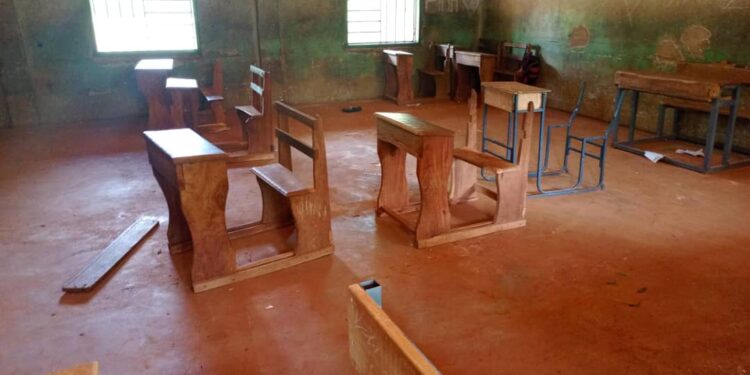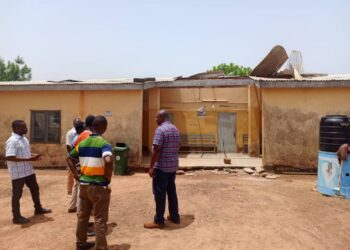Naa Imoru Junior High School in Brutu, located in the Nandom Municipality of the Upper West Region, is grappling with a dire lack of resources that is severely affecting the learning environment for its students.
Established in 1968, the school once stood as a pillar of education for communities across the former Lawra District, which included Lawra, Lambusie, and Nandom.
Today, however, the school faces numerous challenges, ranging from inadequate furniture to a shortage of teachers and learning materials, threatening the future of its students.
With a total population of 108 pupils, the school is in desperate need of basic amenities. 81 of these students currently lack proper furniture and are forced to sit on benches, stools, and broken chairs during lessons.
Some of the desks are either damaged or completely unusable. Only 7 dual and 12-mono desks are manageable, while 30 metal frames of dual desks remain unused due to the lack of seating surfaces.
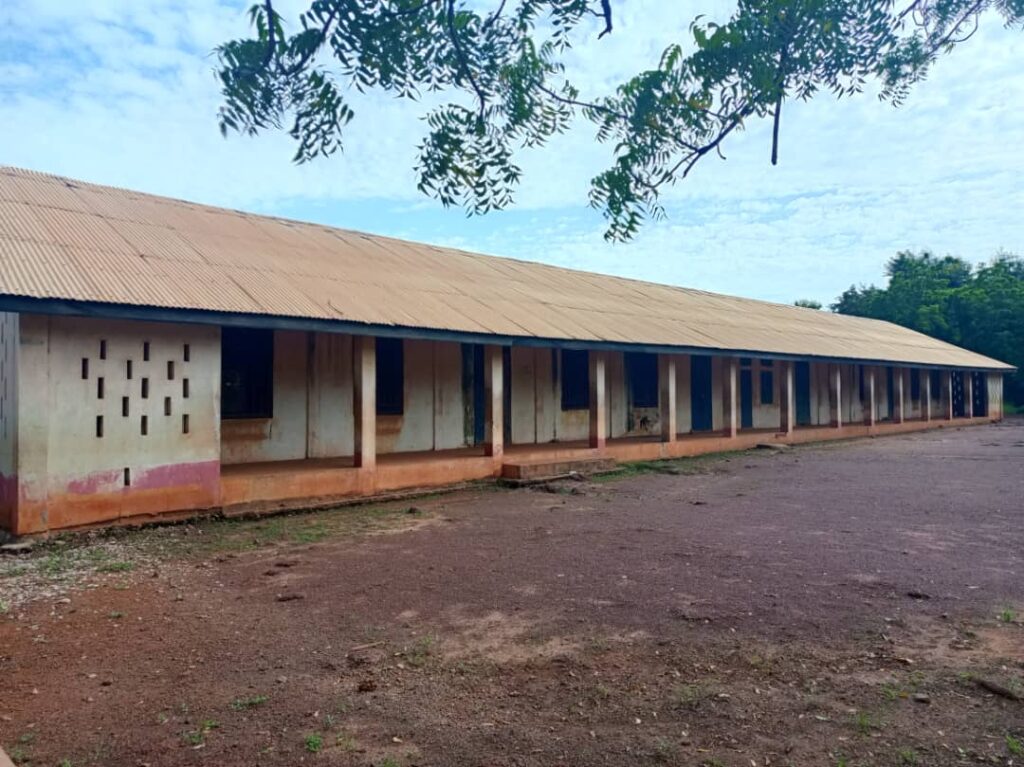
In a striking display of how critical the situation has become, some students were recently seen carrying broken furniture from Brutu to Nandom, a journey that took place during school hours in an attempt to get them repaired.
This not only disrupts their learning but also reflects the school’s inability to provide the basic infrastructure necessary for effective education.
“The fact that students are missing class to carry furniture for repairs is heartbreaking,” said one of the school’s teachers. “It shows just how desperate the situation is.”
The lack of proper seating is affecting not only students’ ability to write and focus but also their physical well-being. “Students are frequently found sleeping in class, not out of laziness but because the poor sitting conditions exhaust them,” a teacher explained.
This issue is compounded by the fact that the school has only four teachers to handle all the academic needs of the students, making it difficult to maintain a productive classroom environment.
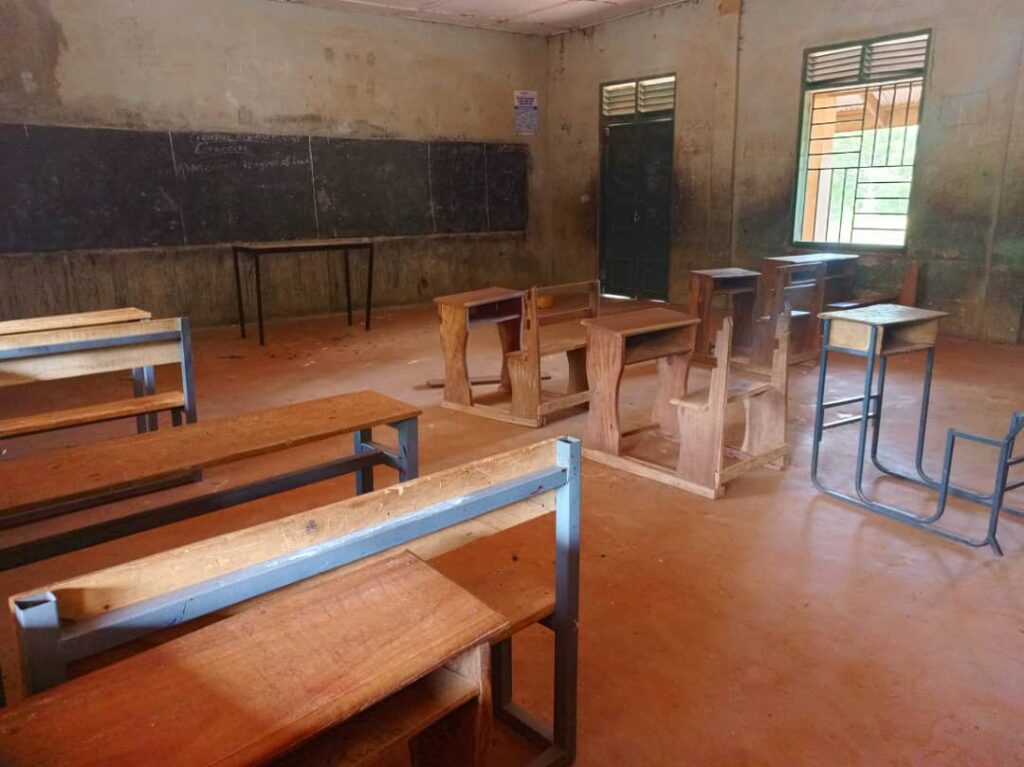
Beyond furniture, the school is also struggling with broken blackboards, especially in the Form 2 classroom, where lessons are often interrupted by the need to improvise with teaching materials.
Basic necessities such as graph boards, blackboard sets, and electricity are absent, further hindering effective teaching and learning.
In an era where ICT literacy is crucial, Naa Imoru Junior High School does not even have a single computer for students to practice on. “Our students are being left behind in a world that increasingly relies on technology,” lamented the headteacher.
The lack of electricity only adds to the difficulty of introducing modern learning techniques, leaving the students to rely on outdated methods that cannot prepare them adequately for the future.
The school’s sports program is also suffering from neglect. There are no sports kits, jerseys, footballs, or volleyballs available for the students, denying them the opportunity for physical education and extracurricular activities that are vital for their overall development.
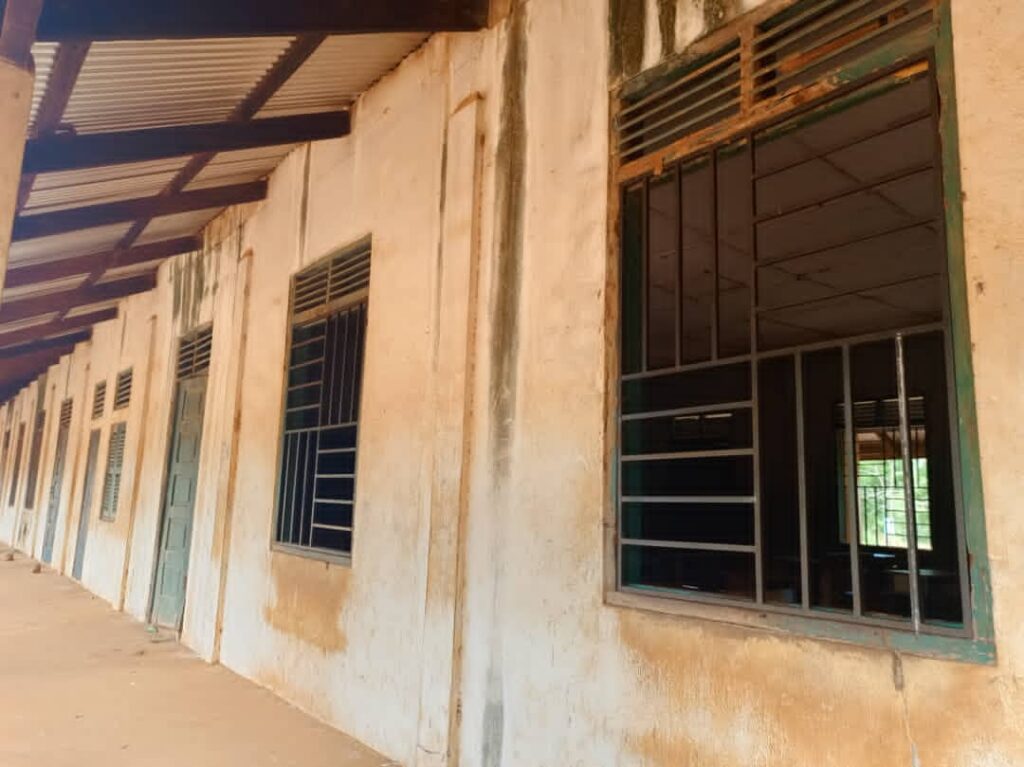
In an attempt to address these issues, the school has turned to the Parent Association (PA) for help, though their response is still pending. One of the teachers remarked, “While we wait for the PA to come through, I am personally trying to salvage what I can to keep the school going.”
Naa Imoru Junior High School, once a respected institution in the region, is now in urgent need of support from government authorities, NGOs, and philanthropists. The students’ future is at stake if immediate interventions are not made to supply the school with desks, blackboards, computers, teaching materials, and sports equipment.
The community is calling on all stakeholders to act swiftly to restore dignity and hope to the students and staff of Naa Imoru Junior High School, ensuring that the next generation has access to a quality education.



